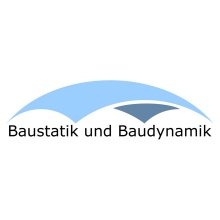Research and teaching in computer-oriented methods of nonlinear structural mechanics
The team of the Institute for Structural Mechanics conducts basic research in many areas of computational mechanics.
The research goals are strongly methodologically oriented with a focus on the finite element method and thin-walled structures (shells). The research topics cover a broad spectrum spanning many disciplines, from the development of models for the fully digital product development of sustainable electric drive architectures to methods for the co-design of fiber composite building systems and the design of adaptive load-bearing structures for buildings and bridges.
Teaching at the Institute for Structural Mechanics covers the scientific basics of structural mechanics and is thus intrinsically multi-material and multi-constructional. Methodically, it focuses on clarity and the relationship between load-bearing behaviour and calculation methods.
The continuous development of computer statics requires to constantly challenge and renew teaching contents and goals. The teaching software StaR2 (der StabwerksRechner) developed at the institute allows not only the quick control of manual calculations but also invites to experiment. Classical structural analysis methods are nowadays less needed for recalculation, but they are indispensable for reflection.
History
In April 1958, with the appointment of Professor Friedrich Wilhelm Bornscheuer (1917--2015), the "Lehrstuhl für Baustatik und Elastizitätslehre" (Chair of Structural Mechanics and Elasticity) - today's Institute for Structural Mechanics ("Institut für Baustatik und Baudynamik") - was founded. Thus, three new institutes followed the "Lehrstuhl für Statik der Massivkonstruktionen", at which Emil Mörsch and Karl Deininger dealt with reinforced concrete and solid bridge construction from 1916 to 1939, and the "Lehrstuhl für Statik und konstruktiven Ingenieurbau" (Hermann Maier-Leibnitz), focusing on iron building construction and iron bridges: In addition to the newly established chair, namely the "Lehrstuhl für Massivbau" (from 1958 Fritz Leonhardt) and the "Lehrstuhl für Stahlbau und Holzbau" (from 1956 Walter Pelikan).
Fritz Leonhardt addressed to the then university management as part of his appointment procedure:
"A separate chair should be established as soon as possible for the evolving field of structural analysis, the task of which must be to systematically simplify and elucidate this difficult field of knowledge."
He implicitly calls for a canonical structural analysis based on scientific principles instead of the strongly material- and standards-based, utilitarian "concrete structural analysis" and "steel structural analysis". Consequently, the teaching of structural analysis at the University of Stuttgart has always been seen as intrinsically multi-material and multi-constructional.
Under the direction of Ekkehard Ramm, the "Institut für Baustatik" evolved in the years 1983 - 2006 into an internationally visible research institution with a focus on shell theory, the finite element method, form finding and optimization as well as computer-oriented methods of structural mechanics in general.
Manfred Bischoff has headed the Institute for Structural Mechanics since 2006. The new designation "Institut für Baustatik und Baudynamik" reflects the growing importance of dynamics in structural engineering practice.
Freundeskreis Stuttgarter Statik e.V.
The Freundeskreis Stuttgarter Statik e.V. is the alumni and support association of the Institute of Structural Mechanics. Among other things, it supports the lecture series "Tragwerke", excursions and awards a study prize to graduates of the Master's degree course in Civil Engineering.

Simona Schöllhuber
Secretary




